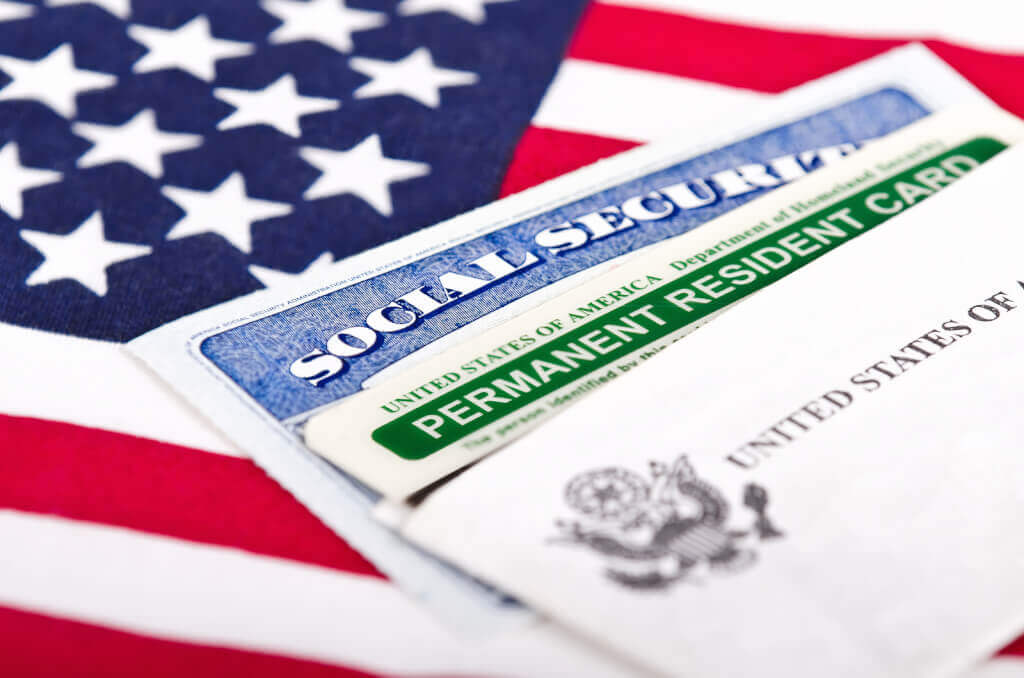Key facts about US immigration policy and Trump's innovations
In the United States, approximately 34 million legal immigrants. Many live and work in the country after obtaining the status of legal permanent resident (also known as a green card), others receive temporary visas available for students and employees. In addition, approximately 1 million unauthorized immigrants have temporary permission to reside and work in the United States under the DACA and TPS programs.

Фото: Depositphotos
For many years, proposals for change have focused on diverting the direction of the immigration system from its current focus on family reunification and migration based on employment to a score-based system that prefers immigration with a certain level of education and employment, writes Pew Research.
The Trump administration announced a proposal according to which potential immigrants will be assessed using a special scoring system based on age, English proficiency, education, and whether the applicant has a well-paid job offer in the United States. The administration has previously proposed a ruling that would prohibit immigrants from entering the United States or legal residency, if they can use Medicaid, food stamps and other forms of government assistance.
Here is the key information about existing immigration programs in the USA and possible changes:
Family Immigration
In the 2017 fiscal year, 748 746 people were entitled to legal permanent residence in the United States. The program allows a person to get a green card if he already has a spouse, child, sibling or parent residing in the country and having US citizenship (in some cases, a green card). Immigrants from countries with a large number of applicants often wait for years to receive a green card, since no more than 7% of all green cards issued annually can fall per country.
On the subject: New Donald Trump Immigration Plan: The Most Important Innovations
US President Donald Trump said that his proposal would give priority to issuing green cards based on family ties only for the closest family members. Today, family immigration, which some people call chain migration, is the most common way to get green cards. In recent years, this is about 2 / 3 out of more than 1 million people annually. This proportion can be reduced to about a third.
Reception of refugees
In fiscal year 2018, the United States admitted 22 refugees (491 in 2017, and 53 in 716). This decrease reflects changes in the admission limit, which for 2016 was limited to 84 thousand people. That's the lowest rate since Congress created the modern program for refugees fleeing persecution in their home countries in 995.

Фото: Depositphotos
One of the first actions of Trump as president in 2017 was the suspension of reception of refugees for security reasons. Ultimately, this process was resumed for refugees from most countries, although applicants from 11 countries that the administration deemed “high risk” were taken individually. In January, 2018 resumed accepting refugees from all countries.
Employment-based green cards
In 2017 fiscal year, 137 855 employment-based green cards were issued to foreign workers and their families. The Trump administration plan, based on points, will increase the number of green cards issued through certain skills. The new system will stop issuing green cards for immigrant investors who invest in US commercial enterprises for job creation or economic gain. This path to the green card, known as the EB-5 program, has been criticized by some lawmakers.
On the subject: Trump's new immigration plan may exclude millions of people from the green card waiting list
Green Card Lottery
Every year around 50 000 people receive green cards under the Diversity Visa program, also known as the visa lottery or green card lottery. Since the program began in 1995, more than 1 have received over a million immigrants through this lottery card through this lottery. Citizens of the countries with the largest flow of legal immigrants in recent years, such as Mexico, Canada, China and India, are not eligible to apply. Trump offered to close this program.

Фото: Depositphotos
Visas H-1B
H-1B visas account for a quarter of temporary employment visas, with 2017 high-skilled foreign workers receiving them in 179. It is the largest temporary visa program in the country. In total, more than 049 million H-2007B visas were issued from 2017 to 1,6. The denial rate increased in 1 under the Trump administration. However, more H-2019B visas were received by immigrants with a US master's degree or higher. The administration also said it plans to limit work permits for spouses of H-1B holders.
Temporary permissions
A relatively small number of unauthorized immigrants who arrived in the US under unusual circumstances received temporary legal permission to stay in the country. One of the key differences for this group of immigrants: despite obtaining permission to reside in the United States, most of them are not able to obtain legal permanent residence. The following two programs are examples of this:
DACA
Near 700 000, unauthorized immigrants have temporary work permits and protection against deportation under the DACA (Deferred Action Program on Children’s Arrivals) from September 5 2017. This program was a key issue for discussion in Congress when it came to changes in immigration law. In September 2017, Trump ordered the program to end. However, DACA members retain their protection while federal courts are considering cases for their future, although the administration is not obliged to accept new applicants. The US Supreme Court may consider the issue in 2019.
Temporary protected status
About 320 000 immigrants from 10 countries have permission to reside and work in the US in accordance with Temporary Protected Status (TPS) due to the fact that war, storms, or other disasters in their home countries can make their return dangerous. In the US, these people have an uncertain future. The Trump administration said it would not extend the program for immigrants from El Salvador, Haiti, Honduras, Nepal, Nicaragua and Sudan, which together make up about 98% of registered immigrants. However, TPS termination decisions for these countries were challenged in federal courts, and the government extended TPS for all countries to 2020. Possible extensions in the future can only be expected for immigrants from Syria, Somalia, South Sudan and Yemen.
Read also on ForumDaily:
Trump's new immigration plan may exclude millions of people from the green card waiting list
New Donald Trump Immigration Plan: The Most Important Innovations
Trump's new immigration plan will significantly reduce family immigration
Immigration Denied Levels During Trump's Presidency Increased Significantly
Subscribe to ForumDaily on Google NewsDo you want more important and interesting news about life in the USA and immigration to America? — support us donate! Also subscribe to our page Facebook. Select the “Priority in display” option and read us first. Also, don't forget to subscribe to our РєР ° РЅР ° Р »РІ Telegram and Instagram- there is a lot of interesting things there. And join thousands of readers ForumDaily New York — there you will find a lot of interesting and positive information about life in the metropolis.











